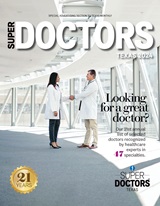American Society of Plastic Surgeons (ASPS)
January 26, 2021
For many of us, as we get older the skin on our face begins to sag and we seem to lose volume around our eyes, cheeks and chin. Is gravity taking its toll in our later years? Or do we lose fat over the course of several years that many of us associate with youth, vibrancy and energy?
Understanding the cause is paramount to how plastic surgeons treat the signs of facial aging.
The traditional theory is sagging: the facial soft tissues simply yield to the effects of gravity over time. And while the idea that weakening ligaments in the midface could result in soft tissue descent still has merit, more recent studies point in another direction. Perhaps the real culprit behind facial aging is the loss of fat – both near the surface of the skin and in deeper areas.
In a new study featured in the February issue of Plastic and Reconstructive Surgery®, the official medical journal of the American Society of Plastic Surgeons (ASPS), Aaron Morgan, MD, of the Medical College of Wisconsin and his colleagues studied 19 patients who underwent computed tomography (CT) scans of the head on two occasions at least a decade apart. Although the patients weren't undergoing facelift surgery or any other cosmetic procedure, scans proved useful for measuring changes in fat deposits in the midface – the area between the eyes and mouth – over time. The patients averaged about 46 years at the time of their initial scan and 57 years at follow-up.
While the findings varied among patients, the results showed "definite and measurable loss of midface fat volume." The total volume of facial fat decreased from about 46.50 cc (cubic centimeters) at the initial scan to 40.8 cc at the follow-up scan: a reduction of about 12.2 percent.
However, the amount of reduction wasn't the same at all levels. Fat volume in the superficial compartment, just under the skin, decreased by an average of 11.3 percent. That compared to an average 18.4 percent reduction in the deep facial fat compartment.
The findings provide direct evidence to support the "volume loss" theory of facial aging – and may help in understanding some of the specific issues that lead patients to seek facial rejuvenation. "In particular, we think that deep facial fat loss removes support from the overlying fat," Dr. Morgan explains. "That causes deepening of the nasolabial fold, which runs from the nose to the mouth. Meanwhile, fat loss closer to the surface makes the cheeks appear deflated."
Variations in fat volume loss can also explain aging-related hollowing around the eyes and heaviness of the jowls. "The upper face has less fat to begin with, so fat loss is more apparent," said Dr. Morgan. "In contrast, the cheek or buccal area has relatively little fat loss, so that area appears fuller as changes occur in other areas of the midface."
This study could help plastic surgeons identify techniques to replace or reposition the midface fat in a more "physiologic" way. "We think that our findings will help plastic surgeons design more natural approaches to facial rejuvenation, with the aim of re-creating the facial fat distribution of youth," said Dr. Morgan. "This proves there is volume depletion and not just laxity of tissues with aging. So, volume replacement should be used in addition to surgical procedures to attempt to recreate the youthful face."
Plastic and Reconstructive Surgery® is published by Wolters Kluwer.
Click here to read "Facial Aging: A Quantitative Analysis of Midface Volume Changes over 11 Years"
Article: "Platelet-Rich Plasma: Evolving Role in Plastic Surgery" (doi: 10.1097/PRS.0000000000007518)

